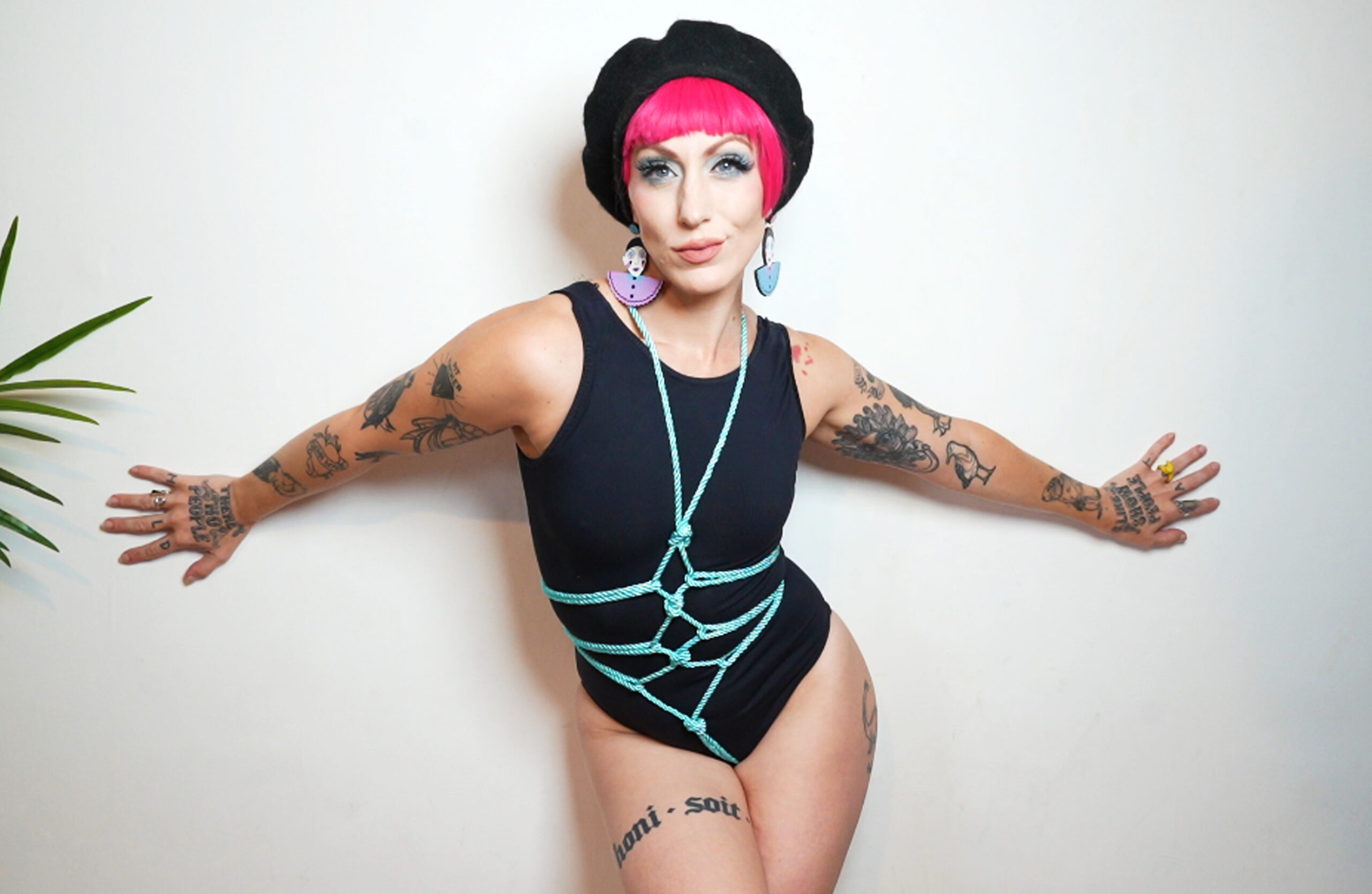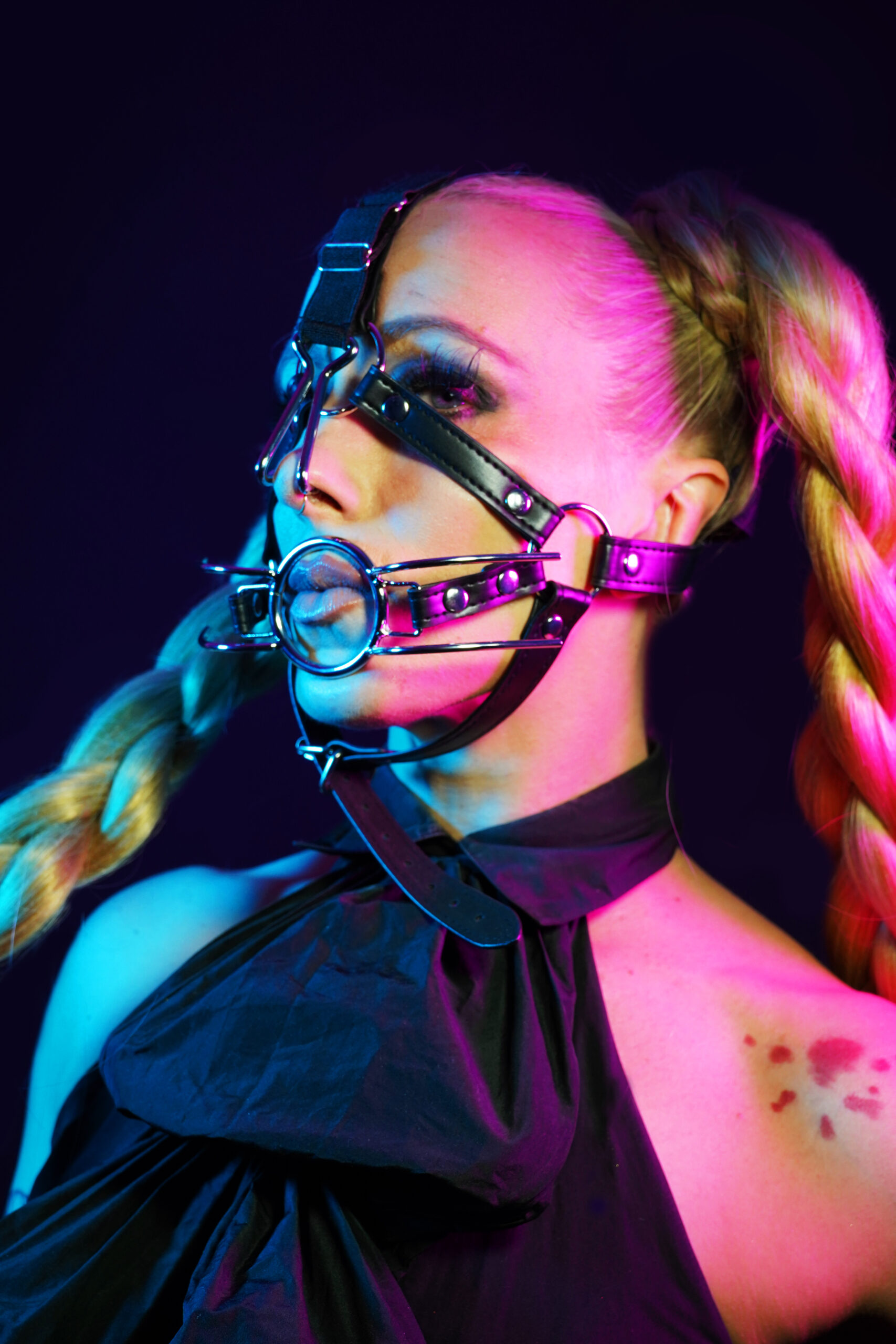Understanding Demigender And Finding Love Outside The Gender Binary

Demigender Explained
Demigender identities encompass a spectrum of experiences where individuals partially identify with one gender while partially identifying with another, or neither. Exploring this multifaceted aspect of gender identity opens doors to understanding individuals who navigate love and relationships outside the traditional binary framework.
Defining Demigender
Demigenders are individuals who partially identify with one gender while partially identifying with another, or neither. For example, someone might feel partly male and partly female, or they may identify as mostly male but not fully. This spectrum of experiences defies rigid binary categories and highlights the fluidity and complexity of gender identity.
Understanding demigender identities is crucial for fostering inclusivity and creating supportive environments for these individuals. casting kit It challenges the traditional notion of gender as strictly male or female, acknowledging that people’s experiences can be more nuanced and multifaceted.
Spectrum of Demigender Identities
Demigender identities encompass a spectrum of experiences where individuals partially identify with one gender while partially identifying with another, or neither. Exploring this multifaceted aspect of gender identity opens doors to understanding individuals who navigate love and relationships outside the traditional binary framework.
Demigenders are individuals who partially identify with one gender while partially identifying with another, or neither. For example, someone might feel partly male and partly female, or they may identify as mostly male but not fully. This spectrum of experiences defies rigid binary categories and highlights the fluidity and complexity of gender identity.
Understanding demigender identities is crucial for fostering inclusivity and creating supportive environments for these individuals. It challenges the traditional notion of gender as strictly male or female, acknowledging that people’s experiences can be more nuanced and multifaceted.
Experiences of Demigender Individuals
Demigender identities encompass a spectrum of experiences where individuals partially identify with one gender while partially identifying with another, or neither. Exploring this multifaceted aspect of gender identity opens doors to understanding individuals who navigate love and relationships outside the traditional binary framework.
Demigenders are individuals who partially identify with one gender while partially identifying with another, or neither. For example, someone might feel partly male and partly female, or they may identify as mostly male but not fully. This spectrum of experiences defies rigid binary categories and highlights the fluidity and complexity of gender identity.
Understanding demigender identities is crucial for fostering inclusivity and creating supportive environments for these individuals. It challenges the traditional notion of gender as strictly male or female, acknowledging that people’s experiences can be more nuanced and multifaceted.
Love Beyond the Binary
Love Beyond the Binary explores the unique experiences of demigender individuals navigating relationships outside the constraints of a traditional gender binary. Demigender identities encompass a spectrum where individuals partially identify with one gender while partially identifying with another, or neither. Understanding this fluidity and complexity allows us to create more inclusive spaces that celebrate diverse expressions of love and connection.
Challenging Gender Norms in Relationships
Love Beyond the Binary explores the unique experiences of demigender individuals navigating relationships outside the constraints of a traditional gender binary. Demigender identities encompass a spectrum where individuals partially identify with one gender while partially identifying with another, or neither. Understanding this fluidity and complexity allows us to create more inclusive spaces that celebrate diverse expressions of love and connection.
Demigenders are individuals who partially identify with one gender while partially identifying with another, or neither. For example, someone might feel partly male and partly female, or they may identify as mostly male but not fully. This spectrum of experiences defies rigid binary categories and highlights the fluidity and complexity of gender identity.
Understanding demigender identities is crucial for fostering inclusivity and creating supportive environments for these individuals. It challenges the traditional notion of gender as strictly male or female, acknowledging that people’s experiences can be more nuanced and multifaceted.
Love Beyond the Binary encourages us to move beyond limiting definitions of love and relationships, embracing the full spectrum of human experience.
Finding Compatibility Outside Traditional Gender Roles
Love Beyond the Binary explores the unique experiences of demigender individuals navigating relationships outside the constraints of a traditional gender binary. Demigender identities encompass a spectrum where individuals partially identify with one gender while partially identifying with another, or neither. Understanding this fluidity and complexity allows us to create more inclusive spaces that celebrate diverse expressions of love and connection.
Demigenders are individuals who partially identify with one gender while partially identifying with another, or neither. For example, someone might feel partly male and partly female, or they may identify as mostly male but not fully. This spectrum of experiences defies rigid binary categories and highlights the fluidity and complexity of gender identity.
Understanding demigender identities is crucial for fostering inclusivity and creating supportive environments for these individuals. It challenges the traditional notion of gender as strictly male or female, acknowledging that people’s experiences can be more nuanced and multifaceted.
Love Beyond the Binary encourages us to move beyond limiting definitions of love and relationships, embracing the full spectrum of human experience.
Communication and Understanding in Demigender Relationships
Understanding demigender identities is crucial for fostering inclusivity and creating supportive environments for these individuals. It challenges the traditional notion of gender as strictly male or female, acknowledging that people’s experiences can be more nuanced and multifaceted.
Love Beyond the Binary explores the unique experiences of demigender individuals navigating relationships outside the constraints of a traditional gender binary. Demigender identities encompass a spectrum where individuals partially identify with one gender while partially identifying with another, or neither. Understanding this fluidity and complexity allows us to create more inclusive spaces that celebrate diverse expressions of love and connection.
Communication is paramount in demigender relationships, as it allows partners to understand each other’s needs and preferences regarding gender expression, pronouns, and intimacy. Open and honest conversations about gender identity can help demigender individuals feel seen, heard, and validated by their partners.
Empathy and respect are fundamental in building strong relationships with demigender individuals. It is essential to listen attentively to their experiences and validate their feelings without judgment. Learning about different gender identities and expressions can broaden our understanding and foster greater empathy.
Love Beyond the Binary encourages us to move beyond limiting definitions of love and relationships, embracing the full spectrum of human experience. By fostering open communication, practicing empathy, and celebrating diversity, we can create a world where all individuals feel loved, accepted, and empowered to express their true selves.
Navigating Dating and Relationships as a Demigender Person
Love Beyond the Binary explores the unique experiences of demigender individuals navigating relationships outside the constraints of a traditional gender binary. Demigender identities encompass a spectrum where individuals partially identify with one gender while partially identifying with another, or neither. Understanding this fluidity and complexity allows us to create more inclusive spaces that celebrate diverse expressions of love and connection.
Online Dating and Profile Representation
Demigender identities encompass a spectrum of experiences where individuals partially identify with one gender while partially identifying with another, or neither. Exploring this multifaceted aspect of gender identity opens doors to understanding individuals who navigate love and relationships outside the traditional binary framework.
Demigenders are individuals who partially identify with one gender while partially identifying with another, or neither. For example, someone might feel partly male and partly female, or they may identify as mostly male but not fully. This spectrum of experiences defies rigid binary categories and highlights the fluidity and complexity of gender identity.
Understanding demigender identities is crucial for fostering inclusivity and creating supportive environments for these individuals. It challenges the traditional notion of gender as strictly male or female, acknowledging that people’s experiences can be more nuanced and multifaceted.
Love Beyond the Binary encourages us to move beyond limiting definitions of love and relationships, embracing the full spectrum of human experience.
- Demigender individuals may express their gender in various ways, and these expressions can evolve over time. It’s important to respect their chosen pronouns and honor their identity as they define it.
- Online dating profiles can be a great opportunity for demigender individuals to connect with like-minded people. Authenticity is key when crafting a profile, using language that reflects one’s true gender identity and preferences.
- When navigating online dating apps, remember to approach interactions with respect and open-mindedness. Be willing to learn about different gender identities and experiences.
Love Beyond the Binary explores the unique experiences of demigender individuals navigating relationships outside the constraints of a traditional gender binary. Demigender identities encompass a spectrum where individuals partially identify with one gender while partially identifying with another, or neither. Understanding this fluidity and complexity allows us to create more inclusive spaces that celebrate diverse expressions of love and connection.
Building Trust and Intimacy
Navigating dating and relationships as a demigender person can be both rewarding and challenging. It involves understanding and communicating your identity clearly while seeking partners who respect and embrace your fluidity. Building trust and intimacy requires open communication, empathy, and a willingness to learn about each other’s experiences.
Open communication is paramount in any relationship, but it’s especially important for demigender individuals. Clearly expressing your gender identity, pronouns, and comfort levels with different forms of intimacy can help avoid misunderstandings and foster a deeper connection. Don’t be afraid to educate your partner about demigender identities if they’re unfamiliar with the concept; patience and understanding go a long way.
Empathy and respect are fundamental to building trust and intimacy. adult media Listen attentively to your partner’s experiences and feelings, validating their perspectives even if they differ from your own. Creating a safe space where both partners feel comfortable expressing themselves authentically is essential for fostering emotional closeness.
Remember that everyone, regardless of gender identity, seeks love, connection, and belonging. Be patient with yourself and the process, and don’t hesitate to seek support from friends, family, or support groups if you need guidance or a listening ear.
Addressing Potential Challenges and Biases
Navigating dating and relationships as a demigender person can be both rewarding and challenging. It involves understanding and communicating your identity clearly while seeking partners who respect and embrace your fluidity. Building trust and intimacy requires open communication, empathy, and a willingness to learn about each other’s experiences.
Open communication is paramount in any relationship, but it’s especially important for demigender individuals. Clearly expressing your gender identity, pronouns, and comfort levels with different forms of intimacy can help avoid misunderstandings and foster a deeper connection. Don’t be afraid to educate your partner about demigender identities if they’re unfamiliar with the concept; patience and understanding go a long way.
Empathy and respect are fundamental to building trust and intimacy. Listen attentively to your partner’s experiences and feelings, validating their perspectives even if they differ from your own. Creating a safe space where both partners feel comfortable expressing themselves authentically is essential for fostering emotional closeness.
Remember that everyone, regardless of gender identity, seeks love, connection, and belonging. Be patient with yourself and the process, and don’t hesitate to seek support from friends, family, or support groups if you need guidance or a listening ear.
Resources and Support for Demigender Individuals Seeking Love
Finding love as a demigender individual can be a unique and enriching journey. It involves navigating relationships outside the confines of traditional gender roles and expectations. Understanding and embracing your own identity is crucial, as is seeking partners who are open-minded and respectful of your fluidity.
Online Communities and Support Groups
Demigender individuals deserve love and connection just like everyone else.
While finding a partner who understands and accepts their unique identity can take time, there are resources and support systems available to help demigender individuals navigate the dating world and build fulfilling relationships.
powerful suction 
Here are some ways demigender folks can connect with others:
**Online Communities:**
* **Discord Servers:** Many dedicated Discord servers cater to demigender individuals and other LGBTQ+ communities. These spaces offer a safe and supportive environment for sharing experiences, finding friends, and connecting with potential partners.
* **Online Forums:** Websites and forums focused on gender identity discussions often have sections or threads specifically for demigender individuals.
**Support Groups:**
* **Local LGBTQ+ Centers:** Many cities and towns have LGBTQ+ community centers that offer support groups, workshops, and social events for people of all gender identities.
* **Online Support Groups:** Websites like Meetup.com can help you find online support groups for demigender individuals or those with similar experiences.
**General Dating Tips for Demigender Individuals:**
* **Be upfront about your identity:** When meeting someone new, be clear about your gender identity and pronouns. This helps avoid confusion and ensures respectful communication from the start.
* **Find communities that align with your values:** Look for dating apps or online communities that specifically cater to LGBTQ+ individuals or are known for being inclusive and accepting of diverse gender identities.
* **Take your time:** Building trust and intimacy takes time. Don’t feel pressured to rush into a relationship. Get to know potential partners well and ensure they respect your identity and boundaries.
cheap dotted pack Remember, finding love is a journey, not a destination. Be patient with yourself, celebrate your unique identity, and know that support and understanding are available to help you along the way.
Therapy and Counseling Services
Finding love as a demigender individual can be both rewarding and challenging.
It involves navigating relationships outside the confines of traditional gender roles and expectations. Understanding and embracing your own identity is crucial, as is seeking partners who are open-minded and respectful of your fluidity. Demigender individuals deserve love and connection just like everyone else.
While finding a partner who understands and accepts their unique identity can take time, there are resources and support systems available to help demigender individuals navigate the dating world and build fulfilling relationships.
Here are some ways demigender folks can connect with others:
- Online Communities
- **Discord Servers:** Many dedicated Discord servers cater to demigender individuals and other LGBTQ+ communities. These spaces offer a safe and supportive environment for sharing experiences, finding friends, and connecting with potential partners.
- **Online Forums:** Websites and forums focused on gender identity discussions often have sections or threads specifically for demigender individuals.
- Support Groups
- **Local LGBTQ+ Centers:** Many cities and towns have LGBTQ+ community centers that offer support groups, workshops, and social events for people of all gender identities.
- Online Support Groups: Websites like Meetup.com can help you find online support groups for demigender individuals or those with similar experiences.
**General Dating Tips for Demigender Individuals:**
* Be upfront about your identity: When meeting someone new, be clear about your gender identity and pronouns. This helps avoid confusion and ensures respectful communication from the start.
* Find communities that align with your values: Look for dating apps or online communities that specifically cater to LGBTQ+ individuals or are known for being inclusive and accepting of diverse gender identities.
* Take your time: Building trust and intimacy takes time. Don’t feel pressured to rush into a relationship. Get to know potential partners well and ensure they respect your identity and boundaries.
Remember, finding love is a journey, not a destination. Be patient with yourself, celebrate your unique identity, and know that support and understanding are available to help you along the way.
Educational Resources on Gender Identity and Relationships
Understanding demigender identities is crucial for fostering inclusivity and creating supportive environments for these individuals. It challenges the traditional notion of how to make a guy cum gender as strictly male or female, acknowledging that people’s experiences can be more nuanced and multifaceted.
Love Beyond the Binary explores the unique experiences of demigender individuals navigating relationships outside the constraints of a traditional gender binary. Demigender identities encompass a spectrum where individuals partially identify with one gender while partially identifying with another, or neither. Understanding this fluidity and complexity allows us to create more inclusive spaces that celebrate diverse expressions of love and connection.
Here are some resources and support systems available for demigender individuals seeking love and connection:
- **Online Communities:**
- Discord Servers: Many dedicated Discord servers cater to demigender individuals and other LGBTQ+ communities. These spaces offer a safe and supportive environment for sharing experiences, finding friends, and connecting with potential partners.
- Online Forums: Websites and forums focused on gender identity discussions often have sections or threads specifically for demigender individuals.
- **Support Groups:**
- Local LGBTQ+ Centers: Many cities and towns have LGBTQ+ community centers that offer support groups, workshops, and social events for people of all gender identities.
- Online Support Groups: Websites like Meetup.com can help you find online support groups for demigender individuals or those with similar experiences.
Educational resources on gender identity and relationships are also readily available:
- The Trevor Project: Provides crisis intervention and suicide prevention services to LGBTQ+ youth.
- GLAAD: Works to promote understanding and acceptance of LGBTQ+ people through the media.
- Human Rights Campaign: Advocates for LGBTQ+ equality through legislation, education, and public awareness campaigns.
Remember that you are not alone, and support is available. Embrace your identity and celebrate the beautiful diversity of human experience.
























